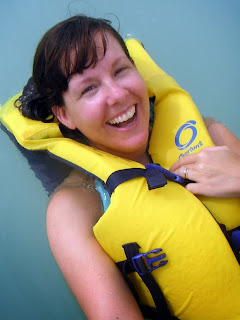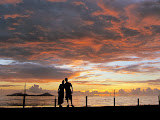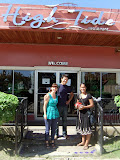

"Guam: Where America’s day starts!" Posters everywhere shout that slogan to make sure you remember that this little island is bona fide US of A - as if all of the license plates with “Guam USA” in big letters aren’t enough to keep it buoyant in your subconscious. It might actually be easy to forget – for all the Japanese signs and tourists everywhere around Tumon beach.
Nevertheless, it’s been really interesting to visit this far flung territory way out across the Pacific.
And it's a big change from Chuuk! Now Chuuk’s a perfectly nice place – but we’d been scheduled to be there for almost 3 weeks on account of flight availability. However some chumming up with the station manager at the United desk on the airstrip let us get on a standby flight out ahead of schedule, and scored us a few bonus nights here as a free stopover. Nice!
Guam- Japan World! This place is paradise for the Japanese: nice beaches, seafood and mega retail. I did feel like I was back in Japan. Although our stay wasn’t for very long we got to hang out on one of the beaches were we hired a water trike which was good fun and a mini work out at the same time!






















































